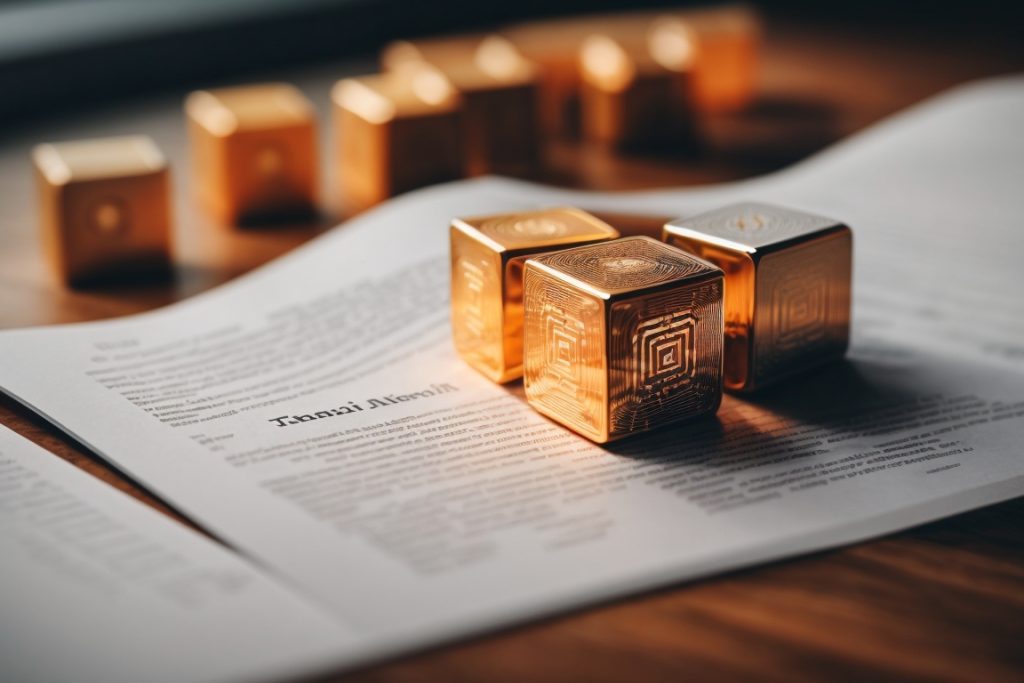
Blockchain For Beginners: How Blockchains Make Decisions?
So you finally wrapped your head around what a blockchain is – a decentralized public ledger powered by fancy math and scattered computers. You grasped how it enables cryptocurrencies, NFTs, DeFi, and more without big banks or bosses in charge. But then it hits you – if there’s no one in charge, how do changes and upgrades happen? Who decides what to build next or what bugs to fix? Let’s decode blockchain governance!
Remember High School Elections?
Cast your mind back to student council races. Candidates made speeches promising new initiatives like better lunches or fixing broken lockers. Students voted to elect presidents and representatives. Once in office, these leaders would help make school decisions.
Blockchain networks are kind of like high school, just with way cooler tech and no detention! The community votes on proposals and elects “representatives” to make decisions. But instead of raising hands or scribbling on ballots, voting happens on-chain using governance tokens or NFTs.
Making Changes the Decentralized Way
In traditional companies and governments, the big bosses in corner offices decide what changes to make. But blockchains have no central authority or CEO in control. Instead, they rely on community governance to determine upgrades, new features, or policy changes.
There are a few different flavors:
- On-chain governance means proposal voting and decision making happens directly on the blockchain itself using tokens or NFTs.
- Off-chain governance takes place externally through forums, committees, or foundations with elected representatives.
- Hybrid models combine both on-chain and off-chain elements.
No matter the approach, the common ingredient is community participation and decentralization.
Raising Your Hand by Staking Your Coins
Most blockchain networks use on-chain governance powered by tokens. Holders can vote on proposals by “staking” coins in a voting contract.
For example, Logan recently staked some of his UNI tokens to vote on adding NFT trading features to Uniswap. Based on the number of tokens staked, votes are tallied automatically on-chain. If the majority votes “Yes,” then developers implement the proposal.
Think of it like running for class office in high school. You had to convince voters you were the best candidate by making speeches and putting up posters. In blockchain networks, your voting power is determined by how many governance tokens you stake instead of how many students check your name.
Elected Blockchains and DAOs
Some blockchains use “representative democracies” where token holders elect delegates to make decisions in governance forums and committees off-chain.
Ava is a Cardano governor elected by the community. She participates in governance discussions on Cardano’s Project Catalyst forum and helps determine which development projects get funded each month.
Blockchain communities also come together to form decentralized autonomous organizations (DAOs) managed by elected leaders. DAOs act as digital co-ops that fund projects and steer network development.
For example, ConstitutionDAO pooled millions from Ethereum supporters as a bidder in an auction for a rare copy of the U.S. Constitution. The DAO wasn’t just aiming to be historical memorabilia collectors. Its mission was advancing decentralized governance ideals aligned with blockchain philosophy.
Voting Drama and Low Turnout
Blockchain governance still has some kinks to smooth out. Just like student council elections, there can be voting drama and rule bending. Participation is often low, too.
During a 2021 vote, some Binance Coin power users allegedly violated protocol by creating multiple wallets to cast extra ballots. In the end, less than 3% of tokens were staked in the election – slightly better than the 2% of high schoolers who vote for class president!
Experts are working on solutions like quadratic voting to make participation easier and decision making more fair. Plus, governance is still maturing. Many communities are independent for the first time and learning what models work best.
Owning a Voice
Fundamentally, blockchain governance allows networks to evolve while preserving decentralization. By giving users ownership and a voice, they serve purposes beyond profits. DAOs allow digital-native creators and communities to collaborate on projects in a radically transparent and democratic way.
Sure, the learning curve is steep. But issues like vote buying, low engagement, and plain old confusion should sort themselves out over time. For digital generation natives who value transparency, personal ownership, and collaboration, flaws and all, decentralized governance puts the power in their hands – where many believe it belongs.
The Takeaway
At the heart of blockchain’s vision is decentralization. Governance mechanisms allow changes and growth without centralized authority. On-chain voting protocols give token holders decision making powers. Representative bodies elected by the community or DAOs can also lead change off-chain. It’s like a digitally upgraded high school democracy with tokens instead of ballots. Sure, there’s drama and growing pains to improve. But blockchains are now in the hands of the people who give them purpose and value. Their voice and ownership is irreplaceable.